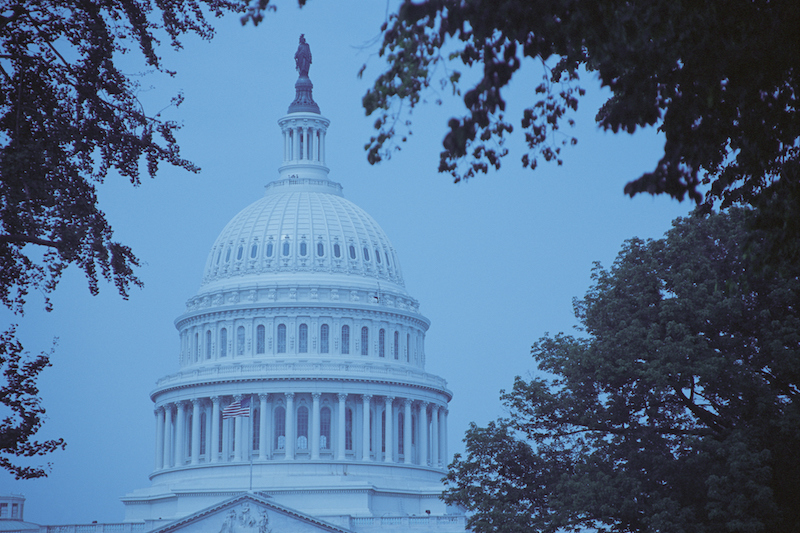
Scholars and industry representatives highlight takeaways from conference on new regulatory developments.
Since the Nixon Administration, some half a century ago, the U.S. government has made concerted efforts to understand the impact of regulations on society through systematic and comprehensive analysis.
The role for benefit-cost analysis in the regulatory process became institutionalized with President Ronald Reagan’s Executive Order 12,291, which required that executive branch agencies only adopt major regulations when “the potential benefits to society for the regulation outweigh the potential costs to society.” Although President William Clinton replaced President Reagan’s order with his own Executive Order 12,866 some 12 years later, he too emphasized the need for expertise in regulatory benefit-cost analysis.
Today, President Donald J. Trump has added two regulatory executive orders of his own to supplement Executive Order 12,866. With the aim of reducing regulatory costs, President Trump issued Executive Order 13,771, which requires that “for every one new regulation issued, at least two prior regulations be identified for elimination.” In addition, Executive Order 13,777 directs federal agencies to designate a regulatory reform officer to “oversee the implementation of regulatory reform initiatives,” including the Trump Administration’s policy to reduce the costs of regulation.
Last fall, scholars, industry representatives, and government officials from across the United States discussed these and other new developments related to regulatory benefit-cost analysis at a symposium organized by the Society for Benefit-Cost Analysis, the George Washington University Regulatory Studies Center, and the Administrative Conference of the United States. This series in The Regulatory Review features eight essays authored by that symposium’s speakers.
The authors of the essays in this series include: Joseph E. Aldy, professor at the John F. Kennedy School of Government; Jennifer Baxter, principal at Industrial Economics; Reeve T. Bull, research director of the Administrative Conference of the United States; Cary Coglianese, professor at the University of Pennsylvania Law School; Susan E. Dudley, director of the George Washington University Regulatory Studies Center, professor at the Trachtenberg School of Public Policy & Public Administration, and former Administrator of OIRA during the Bush Administration; Sally Katzen, professor at the New York University School of Law and former Administrator of OIRA during the Clinton Administration; Michael A. Livermore, professor at the University of Virginia School of Law; and Lisa A. Robinson, senior research scientist at the Harvard T.H. Chan School of Public Health.
The Regulatory Review is pleased to present this series of essays on “New Developments in Regulatory Benefit-Cost Analysis.”
Regulating Within a Budget
April 23, 2018 | Susan E. Dudley, George Washington University Regulatory Studies Center
Despite his rhetoric on regulation, President Trump continues to require agencies to make decisions based on an understanding of regulatory benefits and costs. Although he has overlaid a budget constraint on these existing requirements, and his executive orders signal less emphasis on estimating regulatory benefits, this may not be all bad.
Benefit-Cost Analysis Should Promote Rational Decisionmaking
April 24, 2018 | Sally Katzen, NYU School of Law
The closest analogue for President Trump appears to be President Reagan, but President Reagan’s order was based on textbook economic principles and President Trump’s order does not appear to be based on any principle other than eliminating regulations. Several recent developments raise red flags for the integrity of benefit-cost analysis and centralized review in this Administration.
Regulatory Analysis Under the Trump Administration
April 25, 2018 | Lisa A. Robinson, Harvard T.H. Chan School of Public Health
Most assessments of the role of regulatory analysis focus on the final, published product. But the role that analysis plays in the regulatory development process has an equal or greater importance. The Trump Administration’s increased emphasis on deregulation requires greater attention to approaches for assessing the impacts of decreasing—rather than increasing—regulation.
Uber and the Future of Regulation
April 26, 2018 | Reeve T. Bull, Administrative Conference of the United States
Market failures are often temporary, and regulations that once made eminent sense can become anachronistic as technology evolves. There is no easy way to design a regulatory system that can respond to evolving market forces, yet any effort to do so is likely to yield enormous dividends, given the current political impasse associated with regulatory policymaking.
It’s Time to Think Strategically About Retrospective Benefit-Cost Analysis
April 30, 2018 | Cary Coglianese, University of Pennsylvania Law School
For too long, retrospective regulatory review has focused predominantly on reducing costs and eliminating outmoded regulations. This is a worthy goal, but an emphasis on costs is only part of the equation. Benefits matter too. Retrospective review can do much more if it is used strategically as a tool for helping regulators learn better how to improve regulatory quality and enhance societal well-being.
Addressing Uncertain Forgone Benefits of Deregulatory Actions
May 1, 2018 | Jennifer Baxter, Industrial Economics
To deregulate successfully, agencies need to find ways to address uncertainty, particularly related to the foregone benefits of deregulation. How will regulators choose among hundreds of rules and rule provisions? Perhaps if interested stakeholders are willing to invest in information-gathering and analysis to support deregulatory actions, agencies may be able to demonstrate that risks will not increase if some existing regulations are to be eliminated
Regulatory Impact Assessment in the Age of Partisan Volatility
May 2, 2018 | Michael A. Livermore, University of Virginia School of Law
We have now entered a period of partisan volatility and the resulting policy oscillation has created little or no public benefit. If regulatory impact assessment is to continue to play a useful role during an age of ever greater partisan volatility, OIRA will need to focus not only on the static costs and benefits of regulation, but also on the very real costs imposed on businesses and society by policy oscillation.
Advancing Regulatory Policy to Improve the Lives of the American People
May 3, 2018 | Joseph E. Aldy, John F. Kennedy School of Government
Designing and executing regulatory policy in the future—such that policymakers can evaluate the performance of regulations, identify the most effective implementation tools, and mitigate the cumulative costs—can ensure that government continues to make progress toward the ideal of improving the lives of Americans through regulation.



